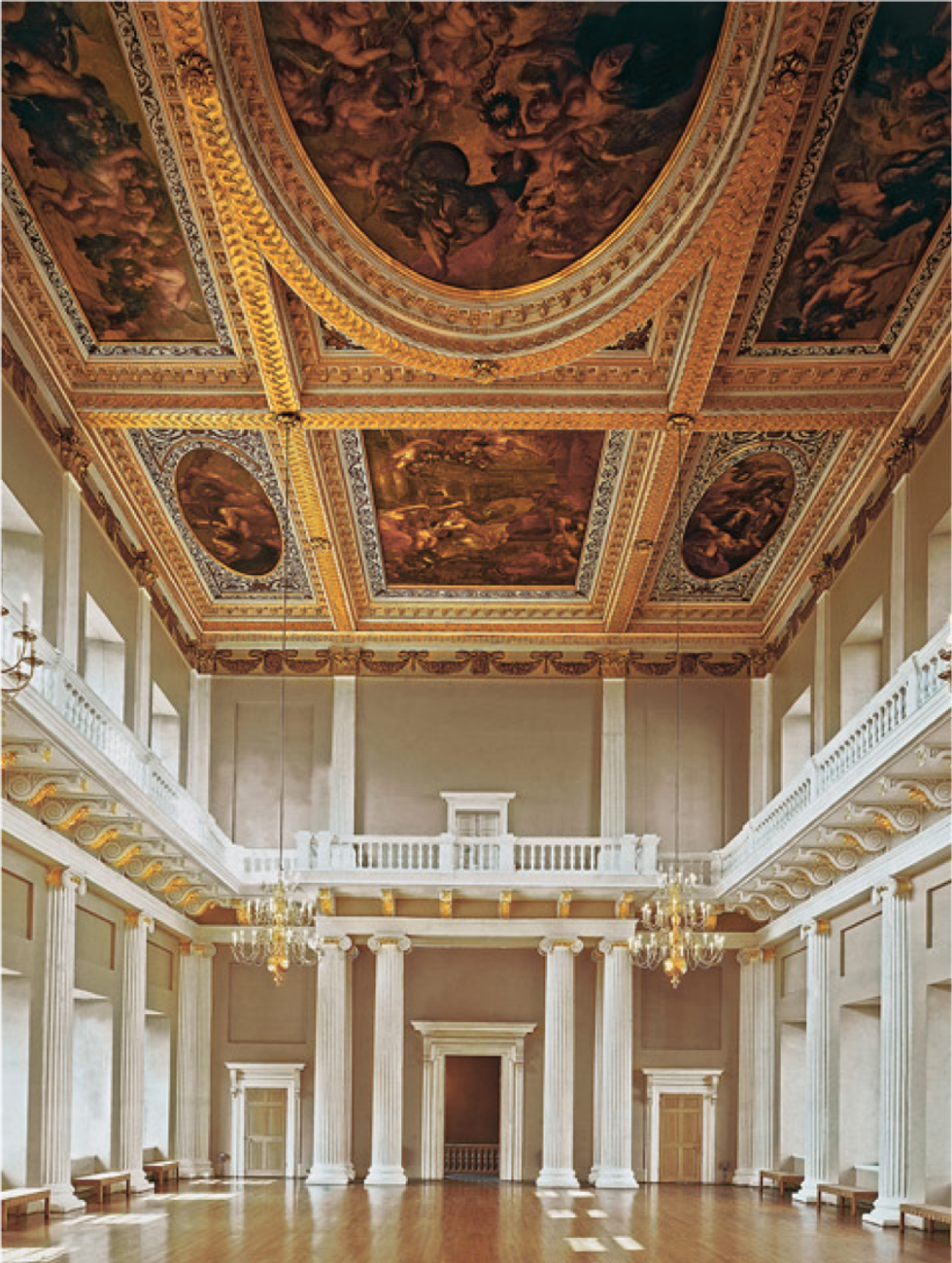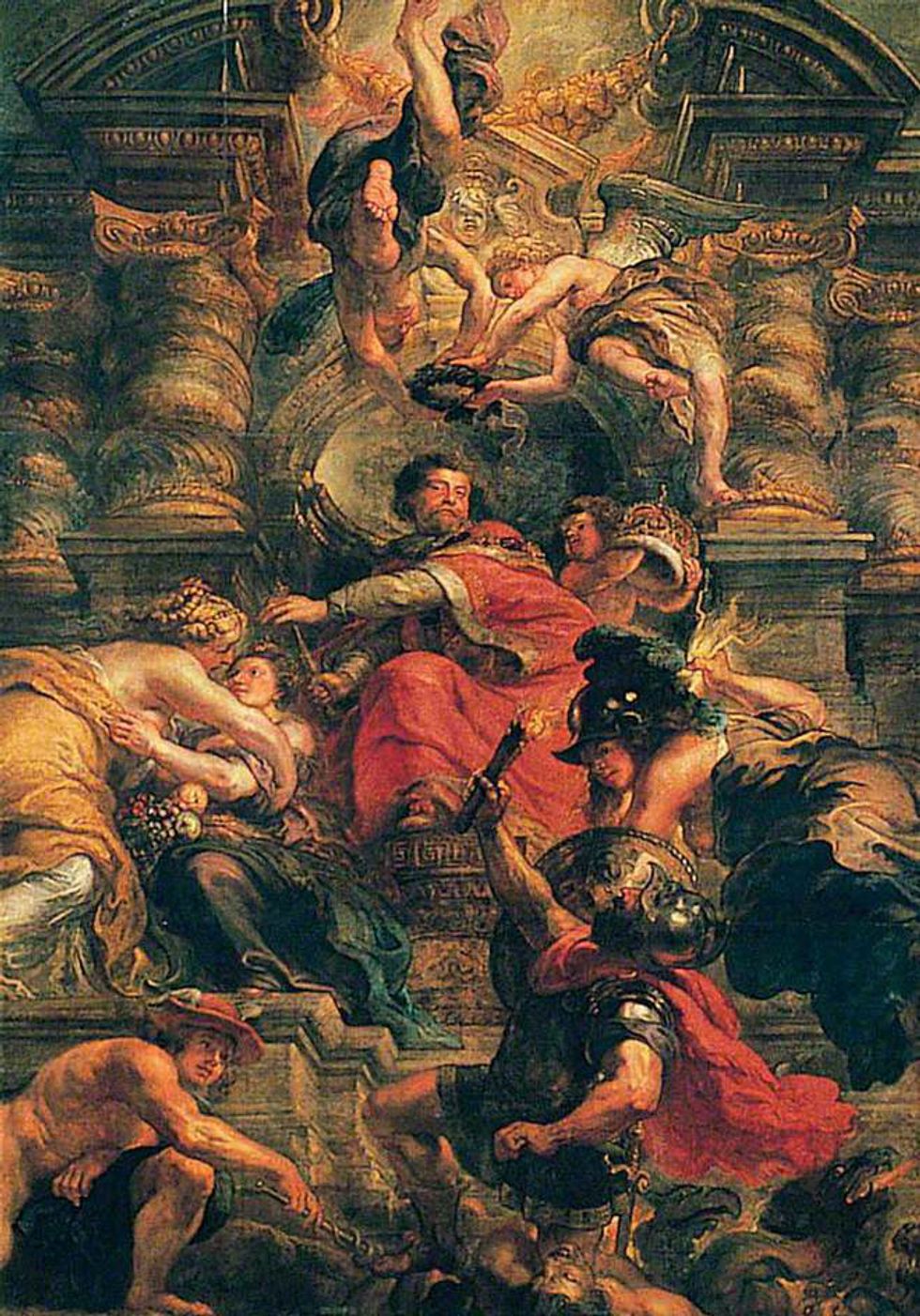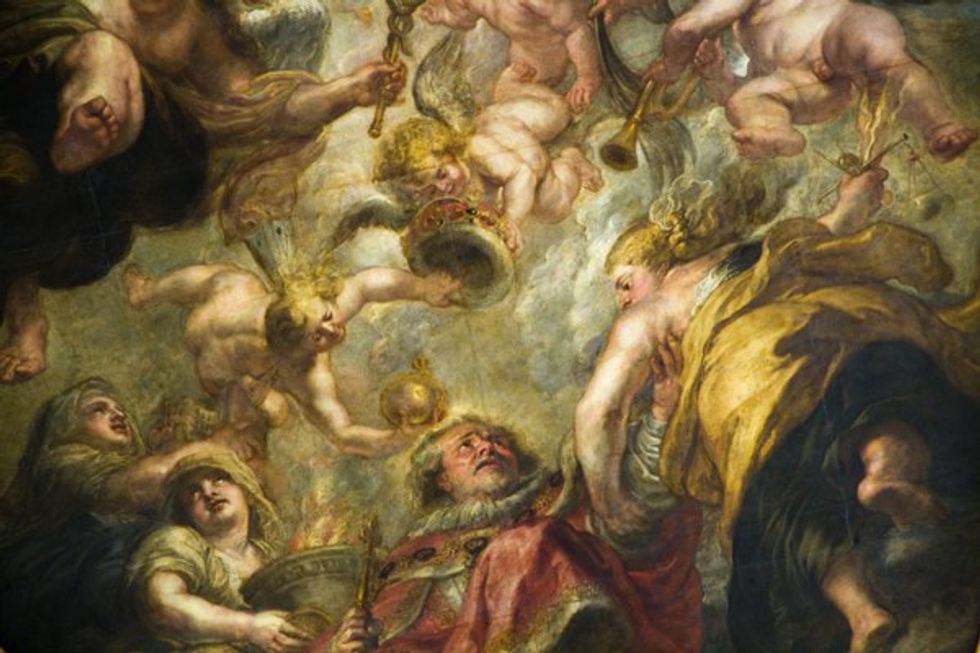
A critical act of patronage, commissioned by the Stuart Court, was Rubens’ work on Banqueting House ceiling in Whitehall. Between 1632 and 1634, the decorative cycle of canvases for the ceiling were painted in oil and still remain installed. Rubens’ work for the ceiling combines historical and allegorical events in an array of images. The factors that led Charles I to commission Rubens’ work for the Stuart Court’s ceiling, The Banqueting House at Whitehall, exemplifies Rubens’ preoccupation in the political situations surrounding Europe.

Whitehall’s ceiling is an impeccable example of the changes that went on during and after Henry’s reign. The ceiling commissioned by Charles I, painted by the foreign and prolific artist Rubens, justified and celebrated the dynastic communities. In the ceiling, the ideas and politics of James I show a monarch in control of its kingdom. The ceiling also expresses the benefits of James I could also be applied to his son Charles. The Banqueting House ceiling would be viewed by a vast amount of courtiers and diplomats, which would secure Charles’ legitimacy. Because he had many troubles in his personal reign, Charles went to great lengths to parallel the identification of his father with the king Solomon and even Christ. His efforts were to glorify the continuity of the Stuart reign. Rubens praised the Stuarts with generalized allegory so that he would not have to provide much historical background. In conjunction with Charles’ political issues in his reign he also did not have a connection with the public. Since the Stuart line did not understand the benefits of public relations, they have to ensure that their court and environs were in their favor. Good standing with an international crowd meant commissioning an artist who was on par with the expanding courts. Since the commission required large-scale works produced by Rubens, the ceiling carried a prestige with visitors who were aware of the ramifications of patronage. Although the ceiling does not reflect contemporary issues, is does reflect the benefits of peace and status of the English court.

The ceiling of the Banqueting House deals with two aspects: the extension of Rubens’ diplomatic career and propaganda. Rubens’ involvement with diplomatic affairs helped him gain many commissions and enhanced his overall performance as an artist. The issues that circulated the purpose of Charles’ commission would have been most prominent in rank for Rubens, since he came for negotiations that would bring a general peace to Europe. The Whitehall ceiling, a potential political instrument, declared the virtue and power of James I and Charles I. Like other works invested in international authority, the commission contained composite and ambiguous images that did not limit the work. Since was executed in an interpretive manner, it permitted engagement between the work and the viewer.Rubens allegorical vocabulary and comprehensive knowledge in all humanist fields proved him exceedingly fit for the commission at Whitehall. Rubens’ capacity to inspire a number of meanings at the Banqueting House is not only a result of his own artist achievements, but also his diplomatic relations, and profound understanding the English court’s significance in international politics.


















